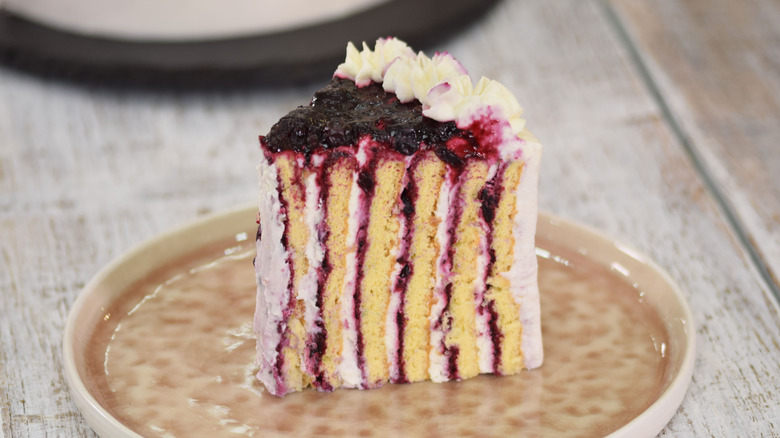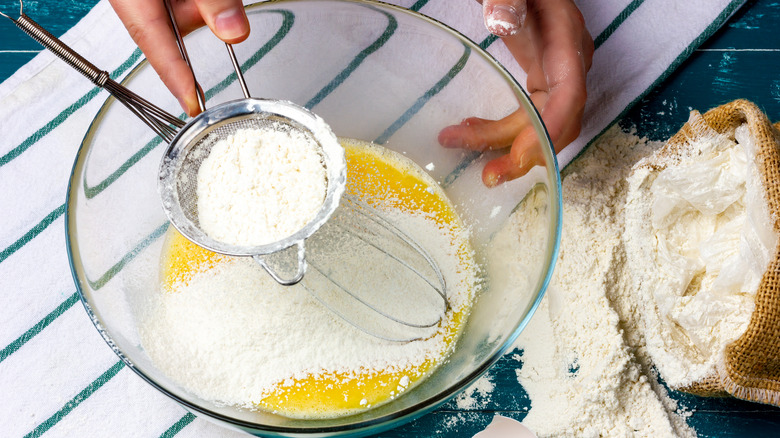The Top Tip You Need To Make GBBO-Worthy Vertical Layer Cakes
For bakers competing on "The Great British Bake Off," even the easiest bakes can be a challenge due to time constraints, which makes viewers appreciate a leisurely day of baking that much more. One impressive GBBO-inspired creation that requires a slow and steady approach is the vertical layer cake, which is made the same way as a classic Swiss roll. Both require the use of sponge cake, which is the best cake for the job due to its sturdy and pliable qualities. While baking a sponge cake is a simple task with few ingredients, it can be tricky to keep the batter light and airy. Not taking the time to mix the batter properly could result in a cake that can't hold its shape when rolled. To avoid a torn or crumbled cake, focus on perfecting the batter from the get-go.
As we've all learned from "The Great British Bake Off," mixing baking ingredients is never as easy as it sounds, and rushing this process is one of the cake-baking mistakes that everyone makes. This crucial first stage requires bakers to use the right techniques and to pay attention to small details. The key to keeping a sponge cake light is to gently fold the ingredients into the batter, being careful not to over-mix it. You may be tempted to whip it together quickly, adding all the ingredients at once, but doing so will overwork the gluten and result in a chewy, dense cake that can't be shaped effectively.
It's worth it to take the time to fold and sift ingredients
If you're looking for some tips on mixing sponge cake ingredients, it's always helpful to learn from the pros. Former "Great British Bake Off" contestant Liam Charles explains in his vertical layer cake recipe that the mixture should be "very light and fluffy, and you can drizzle a ribbon with the mixture before it disappears." Additional hacks to keep you from overmixing the batter include using room-temperature eggs and water so everything blends quickly and thoroughly. Stick to using whole eggs for added volume and moisture. Over-mixing the eggs will cause them to deflate, depriving the batter of the structure it needs to bake well. Add the finely sifted flour last to minimize the chance of overworking the gluten.
In her Yule log Swiss roll recipe, experienced GBBO judge, Prue Leith, instructs, "Take care not to knock out the air from your sponge mixture as you fold in the flour — once the sponge is baked, the tiny pockets of air keep the sponge pliable enough to roll without cracking, while retaining a light and fluffy texture." To fold the cake batter, use a spatula to gently scoop under and along the sides of the bowl using broad strokes, rotating the bowl with each sweep, if necessary. Detail-oriented bakers will be rewarded with a flexible sponge cake base that's firm enough to remain standing, and moist enough to shape into a gravity-defying vertical layer cake.

